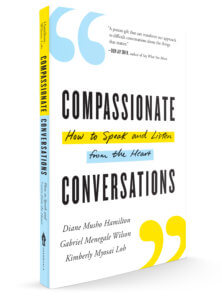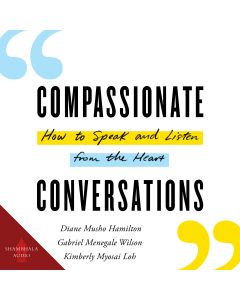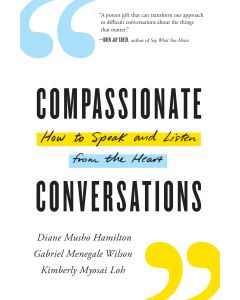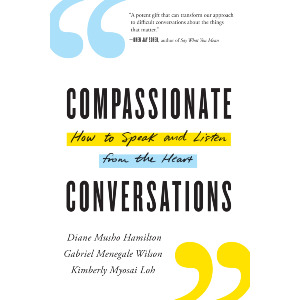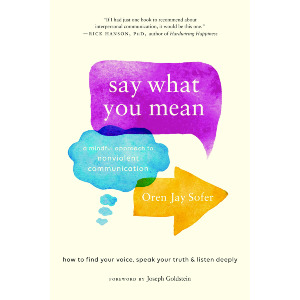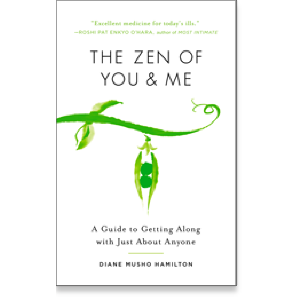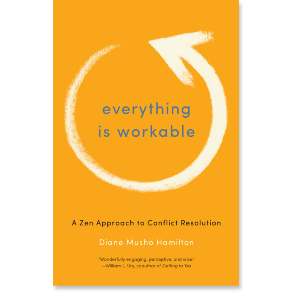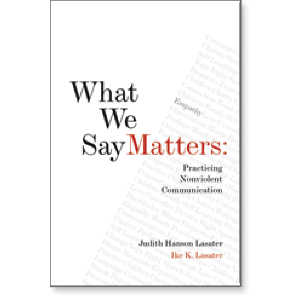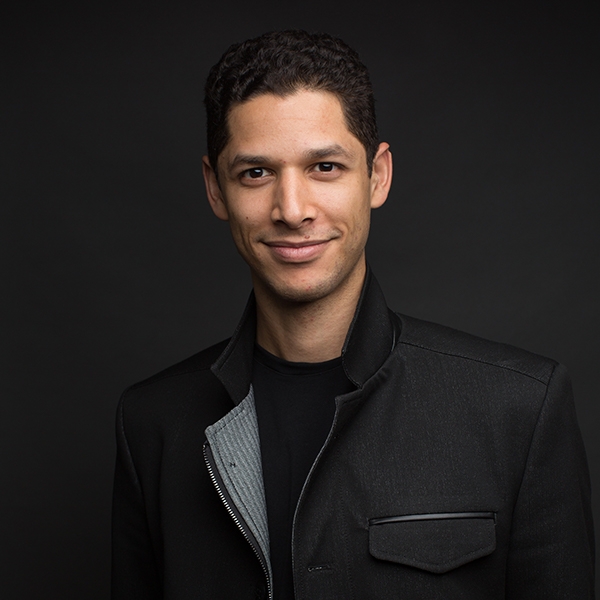

Gabriel Menegale Wilson
Gabriel Menegale Wilson is a leadership coach, organizational change consultant, and peace-builder with a specialty in diversity and inclusion efforts. He is a certified integral facilitator and an associate for Delta Developmental, a leadership and organizational development consultancy.
Gabriel Menegale Wilson
- per page
GUIDES
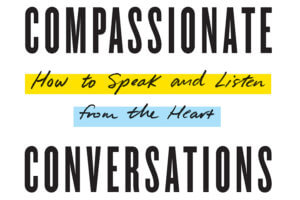
Having a Clear Intention in Conversation
An excerpt from Compassionate Conversations
Intention and Conversation
Having a clear intention will literally help us navigate our conversations when we encounter difficult terrain. To enter a conversation (other than one that is simply social) without an intention is like walking into the wilderness without a compass. And yet we engage in conversations all the time without having one, sometimes without even the vaguest idea of how we would like the conversation to go. Rather than being clear as to what we want, whether it’s to assert our truth, to exchange perspectives, to expand our understanding, to learn about another person’s life, or to practice listening, we go in blind and end up stumbling all over the place. We lose ourselves in dense, hidden motives ranging from wanting to be right and proving others wrong, to flaunting our expertise and establishing dominance. We become entangled in trying to impress others or trying to self-protect. We aren’t prepared for feelings when they crop up, so we ignore or simply cope with them, like wading through unexpected expanses of deserts or boggy swamps. Our important conversations are often rambling, aimless, and in the end, unsatisfying and wearying.
We need a reliable reference point, a North Star if you will, for when the going gets tough.
So in our facilitation work, we insist that our groups always agree on a shared intention for a conversation right up-front. Intentions engage the frontal cortex, that part of the brain involved in thinking, planning, and decision-making. It coordinates our thoughts and actions with internal goals and provides us with a healthy focus. As Robert Sapolsky, a Stanford University professor, neuroendocrinologist, and neurobiologist, points out, “The frontal cortex makes you do the harder thing when it’s the right thing to do.” For example, when anxiety begins to grip the room and we then bring our shared intention to mind, it will often restore relaxation, curiosity, and faith in the process.
Gabriel and Diane organized a workshop that brought together a group of black and white friends to explore and transform their racial dynamics. When putting out the call for the workshop, Gabe explicitly said, “This is a space where everybody, black or white, gay or straight, liberal or conservative, and everyone in-between, must agree to challenge themselves, to grow their heart and communication skills and be accountable to the rest of us. Our intention is to transform our unconscious group dynamics into liberated and mutually affirming relationships.”
Typically, most of us engage in conversations about race, gender, politics, or religion not to grow our heart, but to confirm our own personal beliefs and perceptions, including proving others wrong. Group identity and loyalty to our own tribe has far more influence on what we think, believe, and say than we would like to admit. In this workshop, Gabe deliberately formulated the intention to have conversations that were fresh and revealing, and that gave everyone a chance to grow their skill set. To meet these aims, everyone had to buy into the shared intention. Leaders in human development research assert that individual adults can grow and develop new capacities indefinitely: cognitive, emotional, moral, and even one’s sense of self. And this personal growth can translate to broader cultural change, greater political skillfulness, better leadership, and more effective activism.
Gabe interviewed each person who answered the invitation. He wanted to make sure that their intentions and desires were aligned with those of the workshop. After talking with some potential participants it became clear that the workshop was not appropriate for them. Some were more interested in conversations regarding politics or activism; others wanted to do healing rather than relationship work. Some potential participants felt that the premise that we are all responsible for transforming relationships was faulty since some identity groups have obviously dominated and abused others. But Gabe was clear about the purpose of the conversation he convened. The clarity of his intention helped his friends determine if it was the right conversation for them.
There are all kinds of useful conversations, but they may have very different intentions, and therefore outcomes.
An explicit shared intention serves like a cell membrane for conversation. It includes those who share the intention and excludes those who don’t. This is especially important at a time when in many settings we place a premium on inclusion. We may feel that we need to admit anyone who wants to participate in the conversation, but mixed intentions create mixed results. When people have different purposes and outcomes in mind, conversation can grind to a halt. But with a clear direction, when people have primed their frontal cortex to do the hard thing when it’s the right thing to do, conversations can evolve into creative, energized experiences, where more and more perspectives can come to light.
Resistance, Opposition, and Receptivity
An intention does more than create a positive direction; it also creates resistance and opposition. Have you ever set a New Year’s intention and the first thing you notice is how much you resist it? Have you ever noticed when you commit to a discipline how many of your habits that are precisely the opposite come fully into view? For example, if we intend to listen, we’ll begin to notice all the ways that we simply don’t want to. If we intend to hold multiple points of view, we’ll notice all the times we collapse into one solid, unyielding perspective.
The intention to go up highlights the experience of going down; our desire for this points out how often we do that instead.
But resistance is extremely good news because opposition points to exactly the times, places, and patterns that we need to work with in order to grow our skills. Practice takes time; it requires repetition, and encountering obstacles is intrinsic to our growth and skill-building. Resistance functions like gravity, creating drag on our systems, and overcoming it requires galvanizing strength, ingenuity, and determination. Without resistance, our new habits we’re trying to establish don’t become as strong and durable. So working with intention necessarily includes encountering resistance and dealing with opposition.
Our mistakes and failures are golden opportunities to slow down, examine the moment, and look for alternative responses.
For example, Anthony, an African American participant in the training, shared with the group one of his greatest frustrations about white people: “You all unwittingly promote institutional oppression by enjoying its benefits while being blind to how those very same benefits are not extended equally to people of color. For instance, in my university context, the hiring is often done by committees of people in leadership, all of whom are white. So it’s no surprise that they hire more white people. And then they wonder why we don’t have more diversity in our department.” He went on: “I want a white ally who really gets this!”
His passion and intensity had an enormous impact on the room. After a few moments of letting his message sink in, we asked for a white participant to reflect what he or she had heard Anthony say. Lizzie raised her hand and very deliberately repeated what she had heard: “White people, including myself, enjoy the benefits of our systems and institutions while failing to notice how the benefits exclude people of color.” She mirrored his energy and his frustrations.
She continued: “I’ve done a lot of work on myself, and there is a lot more work I need to do around my blind spots. But here’s what I’ve come to recognize about how I perpetuate white supremacy through the institutions I participate with.” She then briefly shared some poignant examples that showed that she understood first hand his point of view. She also shared the efforts she is undertaking personally to account for the impact of her actions.
“Yeah, yeah, that’s fine, but my colleagues don’t see it, and it drives me crazy!” Anthony protested. Now, it’s important to note that the shared intention of this workshop was to deepen our connection to one another through our differences.
“Hold on” Diane said, jumping into the interaction. “Anthony, you just asked for a white ally who shares your understanding, but I didn’t see you take in what Lizzie just said. How did you hear her? Did her message have any impact on you?”
Anthony seemed startled. He paused, looking back at Lizzie. It was a poignant moment to see him take her in, as if for the first time.
“Yes,” he said, “totally. Thank you for that, Lizzie. Wow. I feel way more relaxed knowing you see this, too.” He reflected further. “It’s crazy that I missed that connection, Lizzie. I think I’m so accustomed to being the only black man on my team, where I’m always the sole person pointing out how institutions perpetuate this. And so I failed to listen to what you were saying because I was just gearing up to make my point again.”
It was a small but intimate moment. Anthony’s role as an advocate, which was brave and difficult, actually took over in his conversation with Lizzie and prevented him from forging a connection with an ally he wanted. His takeaway from the weekend was that while in his activist mode he still needs to maintain an openness to receiving potential allies and connections, who may be closer than he thinks.
An intentional conversation, particularly one focused on the growth of our skills, is geared to disrupt our habitual and reactive patterns so that new perceptions, insights, and skills can come in.
Gabe’s intention was to engage differences and to challenge conditioned patterns and biased views so that everyone in his group could genuinely become one another’s allies. His conversation was meant to free everyone to care more deeply about one another and for their work together.
Mutual intentions create powerful experiences. Gabriel’s workshop participants experienced a way of being with themselves and others that they had been longing for. Inevitably, there came a moment when they realized that the workshop would end, and they would return to the many mixed intentions of everyday life. Gabriel joked with the participants: “Yeah, when you walk into Starbucks they won’t share our intention, and they won’t be using our ground rules. Neither will the other drivers on the freeway. Or the people dealing with your credit card or tech problem. Or the passenger sitting next to you on the airplane. Or perhaps some of your colleagues at the university. But your individual intention will affect and shape the way you show up, and that is the greatest power you have. And the freedom, intimacy, and camaraderie that you thought could never be created or sustained in the real world will simply become who you are. And that change is the best contribution you can make to the world.”
The Practice
- The next time you enter into a casual conversation, take a moment to quietly form an intention.
- At several points during the conversation, revisit that intention and allow it to influence your contribution. Notice whether having a clear intention changed your experience.
Share
Related Books
$16.95 - Paperback
By: Diane Musho Hamilton & Kimberly Myosai Loh & Gabriel Menegale Wilson
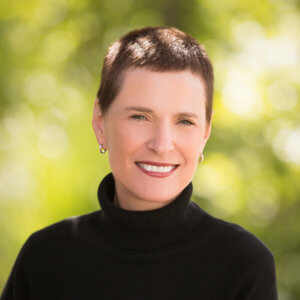
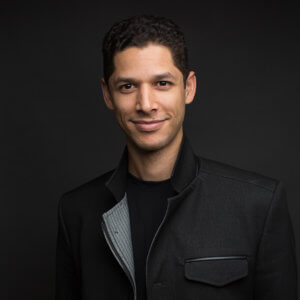
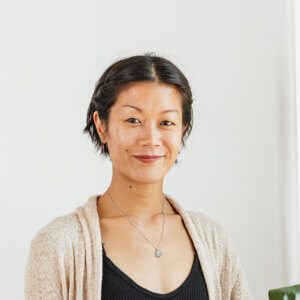

On Compassionate Conversations
A Foreword to Compassionate Conversations
by Ken Wilber
One of the most gratifying and encouraging developments on the recent cultural scene is that, after literally decades of polarizing and increasingly nasty culture wars, there are individuals who do not simply join in the fray and thus only contribute to the mess, but rather have started to actually stand back and seriously reflect on the situation. They point out not just how one side is totally right and the other side totally wrong but how all sides are actually limited, partial, and broken in their own ways. In pointing to a larger, more inclusive, more whole perspective that is equally friendly to all parties, they are usually and loudly disowned by all sides. But they are almost certainly pointing to a much deeper truth here, and one I believe we need to take very seriously. In a sense, they are pointing directly to a tomorrow in which society has become much more coherent, integrated, and meaningful.
Yet, as important as these voices are, almost all of them are still missing at least one very important piece of the puzzle.
Take Douglas Murray, for instance. After writing the very perceptive The Strange Death of Europe about the serious problems caused by the recent massive influx of immigration into Europe, he authored The Madness of Crowds: Gender, Race, and Identity. Although admittingly tilting to a center-right politics, Murray outlined some of the serious problems and limitations that have thus far plagued the public discussions of LGBTQ, gender, and racial rights. As important as some of these insights are, in Murray’s final analysis, all he can do is essentially what all the other parties in the debate end up doing—namely, outline his own position and then advocate strongly for it. There’s nothing wrong with that; it’s the essence of public conversation. But when it comes to creating an overarching framework that could actually unite and integrate the various warring parties, Murray basically says, “We just don’t know how to do this.”
But we do know.
Enter the book Compassionate Conversations by Diane Musho Hamilton, Gabriel Menegale Wilson, and Kimberly Myosai Loh. What’s so extraordinary about this presentation is that it not only addresses the fundamental issues involved in these debates, it does so using a framework that can actually unite and integrate the various parties in the fractured culture wars. Thus, what you will take away from this book is not just a series of incredibly useful skills to help you advance genuinely compassionate conversations, nor just the combined wisdom of three extraordinarily gifted facilitators who have spent their professional lives working as conflict counselors, mediators, and interpersonal guides. But, just as important, you will find an unusually helpful framework that will straightforwardly show you why “everybody is right”—or more accurately, why everybody has ideas that are “true but partial”—everybody—and thus there really is a way to make room for all the parties that are engaged in this brutal and polarizing conflict.
The catch is, each side has to genuinely recognize the ways that it is indeed “true,” but also the ways that it is definitely “partial.” Essentially all sides recognize that the other sides are “partial,” but almost nobody wants to acknowledge how the other sides are also “true.” Yet, as I often point out, no human brain is capable of producing 100 percent error—and thus, it literally follows that each of us has some degree of truth—but that truth is indeed partial and can always be expanded by including other perspectives. It is a failure to acknowledge that obvious reality that has produced the profound deadlock at the very core of the culture wars. And hence, the necessity for a meaningful framework that itself will make this truth come alive by providing a bigger picture in which all sides have some genuinely important contributions to make.
Just as important is understanding the attitude, actions, and skills that can fruitfully apply this unifying framework and make it a vibrant reality for all. And that is especially what you will find in page after page of this book. In chapters with names such as, “What We Have in Common,” “An Exploration of Difference,” “Talking about Social Privilege,” “Politically Correct,” “Becoming Wholehearted,” and “Freedom Here and Now,” you will find example after example of wondrous conversations helping individuals, groups, and even nations come to terms with the fact that reality is just a little bit bigger than any of them thought, and that a genuine peace in their own conflict requires not only a direct and authentic realization of an honest self‑esteem but an expansion of their own esteem to embrace a multiplicity of other perspectives.
All of us, indeed, are true but partial.
The unifying framework itself is composed of several factors. Two of the most prominent, as the authors explain, are Zen Buddhism and Integral Theory. Zen is fairly well‑known and embodies one of the oldest and most effective spiritual practices for helping individuals realize an awareness that is more open, awakened, enlightened, and free. This is an awareness that is both fully transcendent and deeply immanent. Transcendent, in that it helps people let go of their narrow, partial, and limited views in favor of an awareness that is more radically encompassing, whole, and inclusive. And immanent, in that it is nonetheless an awareness that is the very core of our everyday mind, fully present here and now. This type of radically open awareness—versions of which are often called “mindfulness”—can be used in an enormous number of settings to help individuals as well as groups become more relaxed, alert, grounded, and expansive, and the authors put this all‑embracing awareness at the very core of their work.
Integral Theory is a metatheory that has many historical precedents and is today embraced by thousands of people around the world. Although there are numerous individuals who have contributed to its present‑day form, my name is usually mentioned as its major founder. But the stated aim of Integral Theory (or technically, Metatheory) is to provide a meaningful framework that can unite virtually any type of human understanding. To give only one example, when it comes to the important field of developmental psychology, Integral looked at over 100 different developmental models, East and West, ancient and modern, and then did a meta‑analysis of all of them to determine the most commonly accepted features in each. This created a general overall developmental spectrum that has an enormous amount of evidence. (You’ll see how the present authors use this developmental spectrum in just a minute.)
The point is that through these types of comparisons, Integral Metatheory has been able to spot several extremely fundamental elements that various types of human understanding (maps, models, and theories) all have in common. These fundamental integral elements are known by many names, one set of which is: Waking Up, Growing Up, Cleaning Up, and Showing Up.
“Waking Up” is indeed exemplified by practices like Zen Buddhism, as well as many of the other great meditative and contemplative schools around the world (Vedanta, Taoism, Kabbalah, Christian mysticism, Sufism, and so forth), all of which involve some form of “enlightenment” or “liberation” or “awakening” to a fundamental reality (hence “Waking Up”). Although there are various degrees of Waking Up available to people, one of the very highest forms is universally said to be that of “being one with everything” (a state that is often said to reveal, by whatever name, an ultimate Ground of All Being). We have to be careful here, because Waking Up itself is not any traditional religious stance, mythic story, or fundamentalist zealotry—it’s much more what the common phrase today calls “spiritual but not religious.”
But one thing is certain: when you really are one with everything, you are no longer exclusively identified with your own limited self—and thus your awareness becomes incomparably roomier and more open.
This is an excellent place to ground any conflict resolution, mediation, or growth‑enhancing endeavor. The authors make abundant use of this radical openness.
But they also realize that, as profound as Waking Up can be, it’s not the only kind of important truth there is. You can authentically experience being one with everything, and yet this will not give you any specific information about any individual thing in particular. When people thousands of years ago first experienced some of these authentic Waking‑Up or “oneness” realizations, they would indeed feel that they were one with the sun and one with the earth and one with the moon and the stars. But they still believed that the sun circled the earth, and that the earth was flat, and that the stars were holes poked in an overhead dome. They might indeed have directly realized a Ground of All Being, but since that Ground is fully and equally present in every single thing in the universe, it tells you nothing specific about any particular thing. The “oneness” was very real; it’s the “manyness” that wasn’t well understood. And this is still true of Waking Up or Enlightenment or Satori experiences today, and thus Waking Up needs to be supplemented with other forms of truth.
Such as Growing Up. This refers to the developmental process that I previously mentioned, where individuals have been found to grow or evolve or develop through various stages or waves of increasingly more mature and inclusive forms of identity. I mentioned the more than 100 models of this process that Integral has carefully analyzed, and although some models have more stages and some models have fewer, on average most models have found around 6 to 8 major stages of human development—growing and maturing from infancy through childhood into adolescence, adulthood, and elderhood. Now technically this Growing‑Up process refers to stages of interior development—stages of self or values or worldviews that all humans go through. (Some of these developmental models have been tested in over 40 different cultures worldwide—including Amazon rain forest tribes, Australian aborigines, and Harvard professors—with no major exceptions yet found, although individuals themselves are each at different stages. Indeed, these overall stages are clearly an important aspect of any human understanding.)
Now the strange thing about these waves of Growing Up is that you cannot see them by introspecting or looking within. These stages are part of the self that is doing the looking; they are not things that can themselves be looked at. All of us are at some of these stages right now, but most of us have no idea that this is so. For this reason, these stages weren’t even discovered until around 100 years ago. And for just that reason, we find none of these stages present in any of the world’s great religions or meditation systems, and thus one thing that you will not learn from any religion is how to actually Grow Up.
So what are some examples of these actual stages? I mentioned that on average there are around 6 to 8 of them that are most commonly given. But these can be summarized and simplified in various ways, and one of the most common is to summarize them in 4 broad, general stages. Thus, a person’s identity moves from egocentric (identified only with itself) to ethnocentric (identified with an entire group, clan, tribe, or nation) to worldcentric (which, unlike ethnocentric, attempts to treat all people fairly, regardless of race, color, sex, gender, or creed; in an early or modern form, it’s marked by rationality and a scientific method, and then a later or postmodern form, marked by egalitarianism and multiculturalism), and finally to integrated or integral or Kosmocentric stages of growth (identified with all beings and aware of, and integrating, the previous stages themselves).
Overall, a move from “me” to “us” to “all of us” to “all beings.”
You might immediately be able to see that today’s culture wars are indeed primarily a war between three of those stages—the traditional or ethnocentric (often magic or mythic), the scientific or modern worldcentric (usually rational), and the later postmodern or multicultural diversity (very pluralistic or even relativistic). Traditional ethnocentric wants special privileges for its group or tribe; modern rationality wants equal opportunity for all; and postmodern pluralism wants equal outcome for everybody. In various forms, those are indeed the three most widely contested values in the culture wars. But what none of those values offers is an integrated or Kosmocentric viewpoint, which can indeed integrate or unify all of them.
That is the fundamental perspective of this book, and by adopting this bigger picture that makes room for all of them, the authors are able to successfully facilitate the many battles between each of them. This is part of their unifying framework or bigger picture, and it does indeed make room for all.
A bigger picture that also includes “Showing Up.” Showing Up simply refers to some of the most fundamental and important dimensions or perspectives through which anything can be viewed; and thus for each of us to be able to fully show up for our lives, we need to include all of these or else we’re missing out on some of our most crucial realities. Our lives never feel fully whole because we’re actually not including the whole. As with the other major elements of Integral, there are many different names for these perspectives. Traditionally, they are referred to as “the Beautiful, the Good, and the True,” or art, morals, and science. These turn out to be correlated with 1st-person pronouns (defined as “the person speaking”: I, me, mine, which includes the “Beauty in the eye of the beholder”); 2nd‑person (“the person spoken to”: you or thou, which includes how we are supposed to ethically treat each other, or the “Good”); and 3rd‑person (“the person or thing being spoken about”: he, she, it, its, which includes the objective Truth of science). Since an “I” and a “you” make a “we,” these three dimensions are often referred to simply as “I, we, and it.”
The main point, as the authors explain, is that anytime we confuse and conflate any of those perspectives, we will get into serious trouble and almost certainly generate an enormous number of conflicts (with others as well as ourselves). If we confuse “I” and “we,” either the “I” will try to dominate the “we” and become pushy and bullying, sometimes monstrously so; or else “I” will succumb to massive conformity with the “we” and a consequent herd mentality, afraid to stand up for itself or even speak its mind. If we confuse “I” and “it,” we will mistake our subjective values and opinions for objective facts, leaving us open to becoming one of those insufferable know-it-alls whom pretty much everybody despises (their motto is “The last time I was wrong was when I thought I made a mistake”).
As the authors demonstrate, a simple clearing up of these fundamental confusions will go an enormous way toward resolving many of our most recalcitrant and difficult conflicts, and make compassionate conversations all the more likely.
Then there’s “Cleaning Up.” This refers to the various ways that individuals can recognize, integrate, and heal their shadows. (“Shadow” refers to repressed or dissociated material that becomes split off or alienated from consciousness and relegated to the “unconscious,” where it generally causes enormous pain and suffering.) Shadow material is often projected onto others, so while I seem to completely lack any of the nasty shadow quality, others seem full of it. If I repress my own hypercontrolling qualities, for example, I know somebody is an overcontrolling monster, but since it can’t be me, it must be somebody—anybody—else, and suddenly the world seems full of people trying to control me and tell me what to do, and I react angrily to all of that—which does none of my relationships any good and gets me into more conflicts than I can count on appendages. This, needless to say, is a very difficult and delicate area for any mediator or counselor to explore (especially since it directly implies that those things that I loathe in the world around me are those things that I first loathe in myself—nobody really wants to hear that). But it’s only a slight exaggeration to say that almost every conflict in existence has some degree of shadow material present, and all you will get by ignoring it is a failure to resolve the conflict. The authors of this book, at any rate, are generous enough with their clients to fully include shadow material if warranted.
I think you can start to see how all of these areas that I have briefly outlined are incredibly important for any successful conflict resolution, mediation, or simply growth and development in general (in oneself or with others). These areas point to elements that all of us have but few of us recognize as well as elements that are present in virtually all conflicts but rarely engaged (so the conflict remains unresolved). Yet there isn’t a human being alive, I don’t believe, who cannot truly Wake Up, Grow Up, Clean Up, and Show Up. How astonishingly rare it is to find any of those—let alone all of them!—in any sort of counseling or growth‑facilitating process. This is one of the genuine gifts that this book offers.
At the same time, I don’t want to overemphasize this general framework, either the Zen or the Integral Metatheory.
Rather, at the core of this book is the brilliance and enormous talent of three rather extraordinary people, who have dedicated their lives to deeply engaging the most difficult topics and important issues of our times.
They did not get their sagacity from any of these component elements, much as they have incorporated them. The insights are theirs. The brilliance is theirs. The wisdom is theirs. The compassion and concern and care are all theirs. And in the beautiful wonder of their presentation, I think that we can finally see the actual contours of a tomorrow where compassionate conversations are the very core of our society, where an all‑inclusive love is the coin of the realm, where we embrace each other in all of our dialogues, and where the radiance of awareness shines on us all like the light of a thousand suns—with not a single one of us left untouched. In this, we see the very next stage of our own evolution, where culture wars have given way to culture harmony, where compassion is in the very air we breathe, and where each of us is absolutely and indisputably one with everything.
Welcome to tomorrow.
Share
$16.95 - Paperback
By: Diane Musho Hamilton & Kimberly Myosai Loh & Gabriel Menegale Wilson
